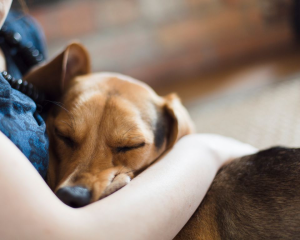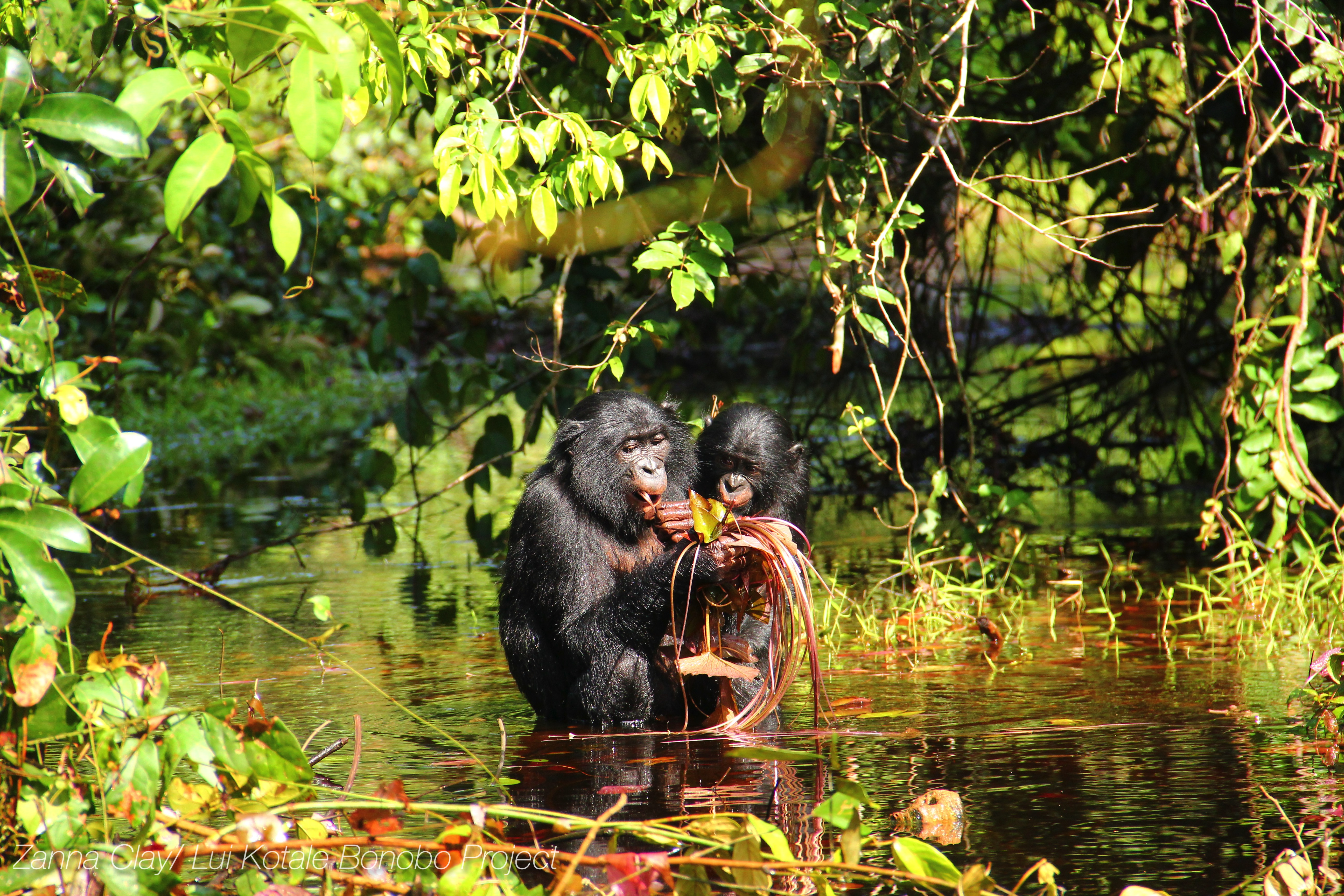Bonobo communication reveals fascinating insights into the linguistic abilities of our closest relatives, as these intelligent primates engage in complex vocalizations that are strikingly similar to human language. Recent research suggests that their vocal interactions demonstrate elements of bonobo language, characterized by word compounds and phrases that convey intricate social meanings. By studying animal vocalizations in their natural habitat, scientists have begun to decode how bonobos communicate in diverse social contexts, highlighting social complexity in animals. This groundbreaking work sheds light on the language roots shared between humans and bonobos, pointing to shared evolutionary traits linked to compositionality in communication. Understanding how these charismatic apes express themselves offers a glimpse into the evolution of language itself, emphasizing the sophistication of their social interactions.
Exploring how bonobos convey messages among themselves opens up a broader discussion about animal communication systems. Utilizing terms like bonobo dialogue or vocal exchanges, researchers have uncovered a rich tapestry of sounds and meanings that reflect these primates’ intricate social networks. By analyzing the vocal repertoires of these animals, the studies illustrate connections between vocal complexity and social behavior, showcasing the importance of communication in maintaining group cohesion. This examination not only underscores the nuances in bonobo socio-vocal interactions but also invites comparisons to the communication styles observed in other intelligent species. As we unravel the layers of meaning in bonobo expressions, we gain valuable insights into the evolutionary trajectory of language across species.
Bonobo Communication: Insights into Vocalization
Bonobo communication has fascinated researchers for years, particularly due to its profound similarities to human language. Through a comprehensive study conducted in the Kokolopori reserve, scientists observed that bonobos engage in complex vocalizations that resemble word compounds used by humans. This suggests that the roots of language may not be as exclusive to humans as previously thought. Instead, bonobos appear to utilize a form of communication that includes key elements associated with social interactions and emotions, highlighting the depth of their social life.
In their vocal behavior, bonobos can express various sentiments by combining sounds in innovative ways. For example, a soft peep might precede a whistle to indicate tension among group members, illustrating how vocalizations can convey layered meanings. These findings have reshaped our understanding of animal vocalizations and their role in social complexity, indicating that some elements of communication are universal across species. This evidence supports the hypothesis that advanced communicating systems evolved alongside the development of complex social structures.
Understanding Bonobo Language: A Study of Compositionality
A key aspect of bonobo language lies in compositionality, which refers to the ability to combine simpler elements into complex structures to convey new meanings. Researchers at the University of Zurich and Harvard University have meticulously cataloged bonobo vocalizations, revealing a sophisticated approach to communication that incorporates elements not unlike our own. This complexity allows bonobos to articulate intricate social dynamics, ultimately enriching their group interactions. Hence, the study of bonobo vocalizations provides valuable perspectives on the evolutionary roots of language.
The research team established a ‘dictionary’ of bonobo vocalizations, mapping different sounds to specific actions or environmental contexts. For instance, a call could signify a warning about a predator or indicate a social state such as fear. These observations led to the conclusion that bonobos’ vocal capabilities extend beyond simple signaling; they demonstrate a structured communication method that resonates with the compositional nature observed in human languages. Such discoveries emphasize the potential evolutionary pathways through which complex verbal communication has developed.
The Connection Between Social Complexity and Vocal Communication
A correlation exists between social complexity and vocal communication among species, particularly in bonobos, who display intricate social networks. Social bonds in bonobo groups are maintained through a variety of vocalizations, which are essential for coordinating movements and ensuring group cohesion. As noted by researchers, species characterized by complex social systems, such as bonobos and chimpanzees, have developed advanced communication methods to navigate their social environments effectively.
Understanding how bonobos utilize vocalizations within their social structure provides insight into the evolutionary advantages such communication systems confer. The ability to signal and respond to one another not only facilitates cooperation but also strengthens community ties. This interplay of vocal complexity and social dynamics is paramount for maintaining relationships at a distance—an element essential for the survival of species living in fluid social groups.
Vocalizations as a Window into Bonobo Behavior
Analyzing bonobo vocalizations offers a new lens through which to understand their behavior and social interactions. Bonobos use their vocal repertoire to express both immediate and long-term social contexts, enabling researchers to interpret their communication strategies in depth. The research highlights various nuances in their calls, suggesting a highly contextual form of communication reflective of specific social interactions, emotions, and environmental factors.
For example, the timbre and sequence of sounds can drastically alter the meaning behind a vocalization, similar to the way humans change tone to convey sarcasm or urgency. These findings prompt a reevaluation of how we perceive animal communication and the cognitive abilities involved. As scientists continue to decode the intricacies of bonobo communication, we gain insights not only into their social structures but also their emotional world, thereby enriching our understanding of animal behaviors more broadly.
The Evolutionary Significance of Bonobo Vocalizations
The evolutionary implications of bonobo vocalizations extend our understanding of language’s origins. By studying bonobos, researchers touch upon essential questions regarding how early forms of communication may have paved the way for the complex language systems present in humans today. The ability to form word compounds in vocalizations indicates a cognitive capacity for abstract thought and production, aligning with the evolutionary trajectory that led to advanced human linguistic skills.
Furthermore, this examination of bonobo communication illustrates how shared ancestors might have established the linguistic and social templates we see in both bonobos and humans. As such, bonobos serve as a vital link in our quest to decipher the roots of vocal language, showcasing how social needs potentially drove the evolution of communication across species. The parallels drawn between human and bonobo communication highlight a shared lineage, bolstering theoretical frameworks about language development.
Implications for Animal Communication Research
The revelations regarding bonobo vocalizations carry significant implications for the broader field of animal communication research. As bonobos exhibit structured language-like traits, their study encourages scientists to investigate similar traits in other species. This pursuit could potentially lead to breakthroughs in understanding the evolution of communication across different animal groups, thereby reshaping our comprehension of social structures in the animal kingdom.
Additionally, by forming a comprehensive “dictionary” of bonobo vocalizations, researchers have laid the groundwork for comparative studies with other primate species. Such explorations can help elucidate the breadth of communicative complexity among species that share ecological and social traits. In the long term, these insights may help bridge the gap in our knowledge about non-human communication systems, contributing to the ongoing discourse regarding intelligence and interaction in the animal kingdom.
The Role of Context in Bonobo Vocalizations
Context plays a pivotal role in the effectiveness of bonobo vocalizations. Researchers found that the surrounding conditions heavily influenced the meanings derived from specific sounds; for instance, a whistle might indicate action during a relaxed setting, while the same sound could denote urgency in a tense social situation. This adaptability in vocal communication underscores the nuanced ways in which bonobos navigate their social world.
Understanding the significance of context not only reveals the richness of bonobo communication but also provides a framework for recognizing how other species might employ similar strategies. This finding contributes to the larger discourse on how animals communicate and respond to social interplay, suggesting a common underlying principle: that effective communication is deeply intertwined with context, which facilitates clearer expressions of intent or emotion.
Bonobos and the Roots of Human Language
The study of bonobo communication presents compelling evidence that the roots of human language may extend into our primate relatives. The parallels drawn from bonobo vocalizations to human language structures suggest shared ancestry, indicating that certain communication elements have long been present in the evolutionary lineage. These relationships prompt us to reconsider how and when complex language systems may have developed, potentially pre-dating Homo sapiens.
Moreover, the discovery that bonobos employ compositionality reinforces the idea that linguistic foundations are not exclusive to human evolution. Such insights challenge long-held views regarding the uniqueness of human language, highlighting that other primates also possess remarkable capabilities for complex communication. Ultimately, these findings illuminate the intertwined nature of social evolution and language development, inviting further exploration into the cognitive processes shared by humans and our closest relatives.
Future Directions for Bonobo Communication Studies
Looking ahead, future studies in bonobo communication will likely expand on the foundational research findings presented in recent studies. As scientists continue to analyze vocal patterns, context, and social interactions, there is tremendous potential for uncovering even richer layers of meaning within their communication systems. Future explorations could integrate technologies such as machine learning and data analytics to decode more nuanced vocalizations, enhancing our understanding of bonobo language.
Furthermore, interdisciplinary collaborations between linguists, animal behaviorists, and cognitive scientists could yield fascinating insights into the evolution of communication. Investigating the developmental paths of bonobos in comparison to other primates may highlight critical evolutionary milestones and offer a more comprehensive understanding of vocalizations. As research progresses, the intricate dynamics of bonobo communication will undoubtedly shed light on broader questions surrounding language and social complexity in the animal kingdom.
Frequently Asked Questions
What is bonobo communication and how does it relate to bonobo language?
Bonobo communication refers to the vocalizations and sounds produced by bonobos to convey messages and emotions. This form of communication is akin to bonobo language, which includes the use of word compounds and phrases to express complex social situations, suggesting that bonobos may share linguistic roots with humans.
How do bonobos demonstrate compositionality in their vocalizations?
Bonobos exhibit compositionality in their communication by combining various calls to create specific meanings, much like humans form sentences. For example, a bonobo’s whistle may be accompanied by a subtle peep to indicate the social context, showing that they can articulate complex ideas through vocalizations.
What role do animal vocalizations play in social complexity among bonobos?
Animal vocalizations in bonobos serve as critical tools for social interaction, enabling them to maintain complex social bonds. The diversity and sophistication of their vocalizations reflect their social complexity, as these calls help coordinate group movements and communicate intentions over distance.
How does the study of bonobo communication enhance our understanding of language roots?
The study of bonobo communication sheds light on the roots of language by revealing that the capacity for complex vocal interactions predates human language. Researchers found that bonobos’ structured vocalizations may provide insights into the evolutionary development of language, emphasizing the connection between social complexity and communication systems.
What findings support the notion that bonobos have a complex communication system?
Researchers observed that bonobos use a variety of vocalizations to perform distinct functions—ordering, announcing actions, or expressing emotions. These findings indicate a sophisticated communication system similar to humans, showcasing their ability to use vocal sequences, which enhances group dynamics and social organization.
Can bonobo language be compared to human language in terms of complexity?
Yes, bonobo language can be compared to human language regarding complexity. The recent studies suggest that bonobos utilize compositionality in their vocalizations, indicating levels of combinatorial complexity in their communication that align with the characteristics found in human language, particularly among species with complex social structures.
What methods did researchers use to study bonobo communication?
Researchers employed systematic observation methods akin to human linguistics, creating a dictionary of bonobo calls and documenting contextual features when vocalizations occurred. This rigorous approach allowed them to analyze patterns and meanings within the vocal repertoire of bonobos, providing valuable insights into animal communication.
How do bonobos vocalizations inform the understanding of social bonds in animals?
Bonobo vocalizations reveal the crucial role of communication in maintaining social bonds. By understanding how different calls correspond to social interactions, researchers have highlighted how these vocalizations support the formation of long-term relationships among bonobos, underscoring the interplay between vocal complexity and social dynamics.
| Key Point | Description |
|---|---|
| Vocalization Patterns | Bonobos vocalize in response to distant members of their group, indicating an advanced level of communication. |
| Comparison to Human Language | Research suggests that bonobos use word compounds and phrases similar to human language, indicating roots of language may predate humans. |
| Compositionality | The ability to create meaning by combining sounds parallels human language, revealing a sophisticated communication system among bonobos. |
| Research Methodology | Researchers categorized bonobo sounds over eight months, identifying various vocalizations and their meanings in social contexts. |
| Findings on Social Complexity | Bonobos exhibit complex social structures that depend on their vocal communication capabilities, similar to human social networks. |
| Future Implications | This study enhances our understanding of animal communication and its evolutionary significance, challenging the notion that structured language is exclusive to humans. |
Summary
Bonobo communication shows that these remarkable primates share sophisticated vocal behaviors akin to human speech patterns. This insight not only broadens our understanding of their social dynamics but also offers a glimpse into the evolutionary roots of language itself. The study’s findings underscore the importance of vocal complexity in maintaining social bonds and highlight the deep connections between bonobos and humans, further emphasizing the significance of researching bonobo communication.









